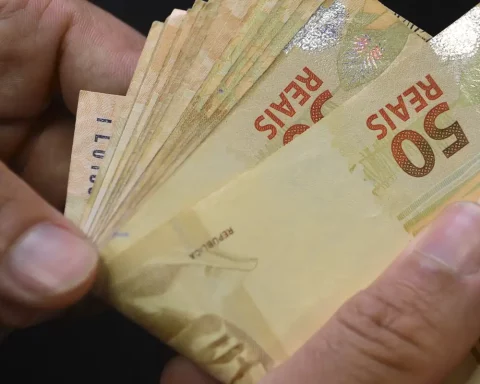Despite the high volume of fixed-rate bond maturities, the Federal Public Debt (DPF) rose in July and surpassed the R$6.7 trillion mark. According to figures released this Friday (30) by the National Treasury, the DPF went from R$7.068 trillion in June to R$7.139 trillion last month, an increase of 1.02%.
Originally scheduled to be released on Wednesday (28), the report would be published on September 4, due to the standard operation of the National Treasury servers. However, the document was released on Friday night because, according to the agency, a regulation determined the publication by the last business day of the month.
Even with the increase in July, the DPF remains within the forecast. According to the Annual Financing Plan (PAF), presented at the end of January, the DPF stock must close 2024 between R$7 trillion and R$7.4 trillion.
The domestic public debt (DPMFi) rose 1%, from R$6.754 trillion in June to R$6.822 trillion in July. Last month, the Treasury issued R$10.69 billion more in bonds than it redeemed, mainly in securities adjusted by the Selic (the economy’s basic interest rate). The debt also rose due to the appropriation of R$57.12 billion in interest.
Through the appropriation of interest, the government recognizes, month by month, the correction of the interest that is levied on the bonds and incorporates the amount into the public debt stock. With the Selic rate (the basic interest rate of the economy) at 10.5% per year, the appropriation of interest puts pressure on the government’s debt.
Last month, the Treasury issued R$139.6 billion in DPMFi bonds. Most of this total (R$98.83 billion) was to meet the demand for bonds adjusted by the Selic rate (the economy’s basic interest rate). The issuance offset the high maturities of fixed-rate bonds that occur in the first month of each quarter.
Last month, R$115.26 billion in fixed-rate securities (with interest rates set at the time of issuance) matured. With the high volume of maturities in July, redemptions totaled R$131.94 billion, much higher than the amount recorded in June, when redemptions had reached R$12.34 billion.
In the foreign market, with the rise of the dollar, the external Federal Public Debt (DPFe) rose 1.28%, going from R$313.61 billion in June to R$317.63 billion last month. The main factor was the 1.86% rise of the US currency last month. The dollar began to rise in June, influenced by the delay in the beginning of the interest rate cut in the United States. The rise was only not greater because of the maturity of a R$3.089 billion bond in the international market.
Mattress
For the third month in a row, the public debt buffer (financial reserve used in times of turbulence or high concentration of maturities) increased. This reserve went from R$1.032 trillion in June to R$1.105 trillion last month.
Currently, the buffer covers 8.2 months of public debt maturities. In the next 12 months, approximately R$1.46 trillion of the DPF is expected to mature.
Composition
Due to the issuance of bonds linked to the Selic rate, the proportion of securities adjusted by the basic interest rate rose sharply, from 43.74% in June to 44.95% in July. The PAF predicts that the indicator will close 2023 between 40% and 44%. This type of security attracts the interest of buyers due to the high level of the Selic rate. The percentage may rise in the coming months due to the prospect of an increase in the basic interest rate in the economy.
The strong maturity of fixed-rate securities (with a yield set at the time of issuance) changed the composition of the DPF. The proportion of these securities fell from 22.67% in June to 21.33% in July, below the minimum limit established by the Treasury. The PAF predicts that the indicator will close 2024 between 24% and 28%.
In recent months, the Treasury has started issuing more fixed-rate securities. However, the return of market instability could jeopardize issuances, because these securities are in greater demand during times of economic stability.
The share of inflation-adjusted bonds in the DPF rose slightly, from 29.17% to 29.28%. The PAF predicts that inflation-linked bonds will end the year between 27% and 31%.
Composed of old domestic debt securities adjusted in dollars and external debt, the weight of the exchange rate in the public debt increased slightly, from 4.42% to 4.44%, mainly driven by the maturity of the external debt security. The public debt linked to the exchange rate is within the limits established by the PAF for the end of 2024, between 3% and 7%.
Term
The average term of the DPF increased from 4.02 to 4.03 years. The Treasury only provides the estimate in years, not months. This is the average time it takes for the government to renew (refinance) the public debt. Longer terms indicate greater investor confidence in the government’s ability to honor its commitments.
Holders
Financial institutions continue to be the main holders of the internal Federal Public Debt, with a 30.7% share of the stock. Pension funds, with 23.1%, and investment funds, with 22%, appear next on the list of debt holders.
With the turbulence in the global financial market, the share of non-residents (foreigners) fell from 9.8% in June to 10% in July. The indicator is at its highest level since March of this year. The other groups account for 14.2% of the share.
Through public debt, the government borrows money from investors to honor financial commitments. In exchange, it agrees to return the funds after a few years, with some adjustment, which may follow the Selic rate (the economy’s basic interest rate), inflation, the dollar or be fixed (defined in advance).














